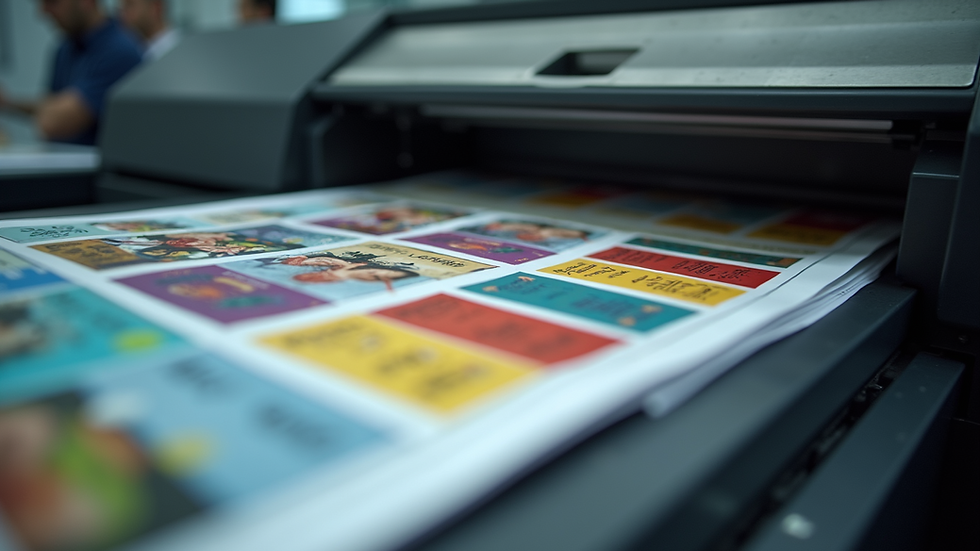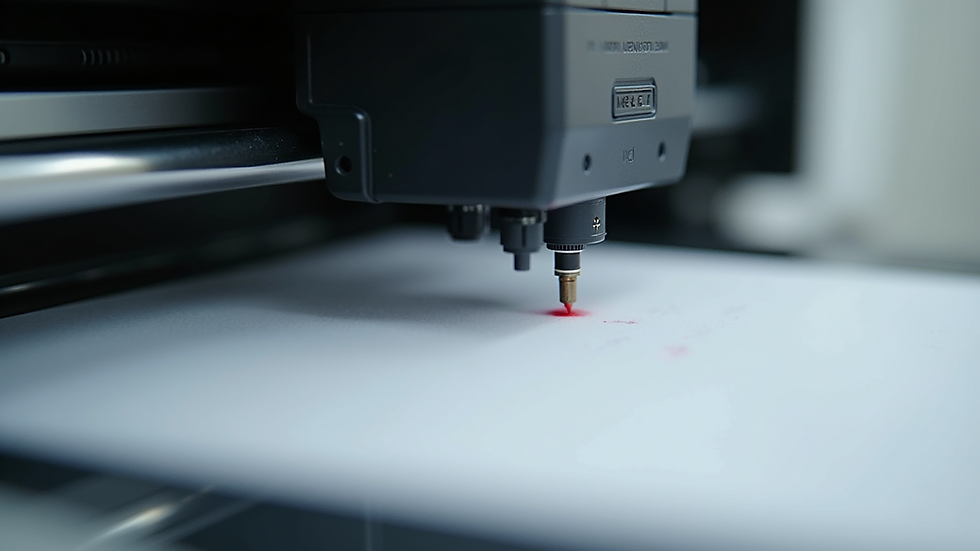Key Elements of Successful Marketing Materials
- cmyk graphics
- Sep 15
- 4 min read
Creating effective marketing materials is essential for any business aiming to capture attention, communicate value, and drive action. Whether you are designing brochures, flyers, posters, or digital content, understanding the key elements that make marketing materials successful can significantly boost your brand’s impact. This article explores these elements in detail, providing practical tips and examples to help you craft compelling marketing assets.
Understanding the Role of Marketing Materials
Marketing materials serve as the bridge between your brand and your audience. They communicate your message, showcase your products or services, and encourage potential customers to engage with your business. The effectiveness of these materials depends on how well they are designed and how clearly they convey your brand’s unique value proposition.
Successful marketing materials should:
Grab attention quickly
Deliver a clear and concise message
Reflect your brand identity consistently
Include a strong call to action (CTA)
Be visually appealing and easy to read
For example, a well-designed brochure for a local restaurant might feature vibrant images of signature dishes, a clear description of the menu, and an invitation to book a table or order online. This combination of elements ensures the brochure not only attracts interest but also motivates the reader to take the next step.

Essential Design Principles for Marketing Materials
Design plays a crucial role in the success of marketing materials. Good design helps your message stand out and makes it easier for your audience to understand and remember your brand. Here are some fundamental design principles to keep in mind:
1. Simplicity and Clarity
Avoid clutter by focusing on the most important information. Use white space effectively to give your content room to breathe. A clean layout helps readers quickly grasp your message without feeling overwhelmed.
2. Consistent Branding
Use your brand’s colors, fonts, and logo consistently across all materials. This builds brand recognition and trust. For instance, if your brand uses a specific shade of blue and a particular font style, these should appear on your flyers, business cards, and digital ads.
3. Visual Hierarchy
Organize content so that the most important elements stand out. Headlines should be bold and large, subheadings smaller, and body text easy to read. Use contrasting colors to highlight key points or CTAs.
4. High-Quality Images
Images should be sharp, relevant, and professional. Avoid pixelated or generic stock photos. For example, a close-up of your product or a high-angle view of your store can create a stronger connection with your audience.
5. Readability
Choose fonts that are easy to read both in print and on screens. Avoid overly decorative fonts for body text. Ensure there is enough contrast between text and background colors.
By applying these principles, your marketing materials will not only look professional but also communicate your message effectively.

Crafting Compelling Content for Marketing Materials
Content is king when it comes to marketing materials. Even the most beautiful design will fail if the message is unclear or unengaging. Here’s how to create content that resonates:
Know Your Audience
Tailor your message to the needs, preferences, and pain points of your target audience. Use language and examples that speak directly to them.
Focus on Benefits, Not Just Features
Explain how your product or service solves a problem or improves the customer’s life. Instead of just listing features, highlight the benefits. For example, instead of saying "Our printer has a 1200 dpi resolution," say "Enjoy crisp, professional-quality prints every time."
Use Clear and Concise Language
Avoid jargon and long sentences. Use bullet points or numbered lists to make information easy to scan.
Include a Strong Call to Action
Tell your audience exactly what you want them to do next - whether it’s visiting your website, calling for a quote, or visiting your store. Use action verbs like "Call now," "Book today," or "Get your free sample."
Proofread and Edit
Errors can damage your credibility. Always check for spelling, grammar, and punctuation mistakes before printing or publishing.
By focusing on clear, benefit-driven content, your marketing materials will engage readers and encourage them to act.
Leveraging Printing and Branding Solutions for Impact
Once your design and content are ready, the next step is production. Choosing the right printing and branding solutions can elevate your marketing materials from ordinary to outstanding. High-quality printing ensures colors are vibrant, text is sharp, and materials feel professional to the touch.
For businesses looking to make a lasting impression, partnering with reliable providers of printing and branding solutions is essential. They offer a range of services including custom finishes, premium paper stocks, and innovative branding options that can help your materials stand out.
For example, using matte or glossy finishes, embossing, or foil stamping can add a tactile dimension that attracts attention and conveys quality. Additionally, eco-friendly printing options are increasingly popular and can align with your brand’s sustainability values.

Measuring the Effectiveness of Your Marketing Materials
Creating marketing materials is only part of the process. To ensure your efforts are paying off, it’s important to measure their effectiveness. Here are some ways to track performance:
Track Response Rates: Use unique phone numbers, QR codes, or URLs on your materials to monitor how many people respond.
Gather Customer Feedback: Ask customers how they heard about your business or what they think of your materials.
Analyze Sales Data: Look for increases in sales or inquiries following the distribution of your marketing materials.
Conduct A/B Testing: Test different versions of your materials to see which design or message performs better.
By regularly reviewing these metrics, you can refine your marketing materials to better meet your goals and maximize return on investment.
Enhancing Your Marketing Materials Over Time
Marketing is an ongoing process. To keep your materials effective, update them regularly to reflect changes in your products, services, or market trends. Here are some tips for continuous improvement:
Refresh visuals to stay modern and relevant.
Update offers and CTAs to maintain urgency.
Incorporate customer testimonials or case studies.
Experiment with new formats like postcards, banners, or digital ads.
Stay informed about new printing technologies and branding trends.
Consistent evaluation and adaptation will help your marketing materials remain powerful tools for business growth.
By focusing on clear messaging, strong design, quality production, and ongoing evaluation, you can create marketing materials that truly connect with your audience and drive results. Whether you are a small business or a large enterprise, mastering these key elements will set you apart in a competitive marketplace.





Comments